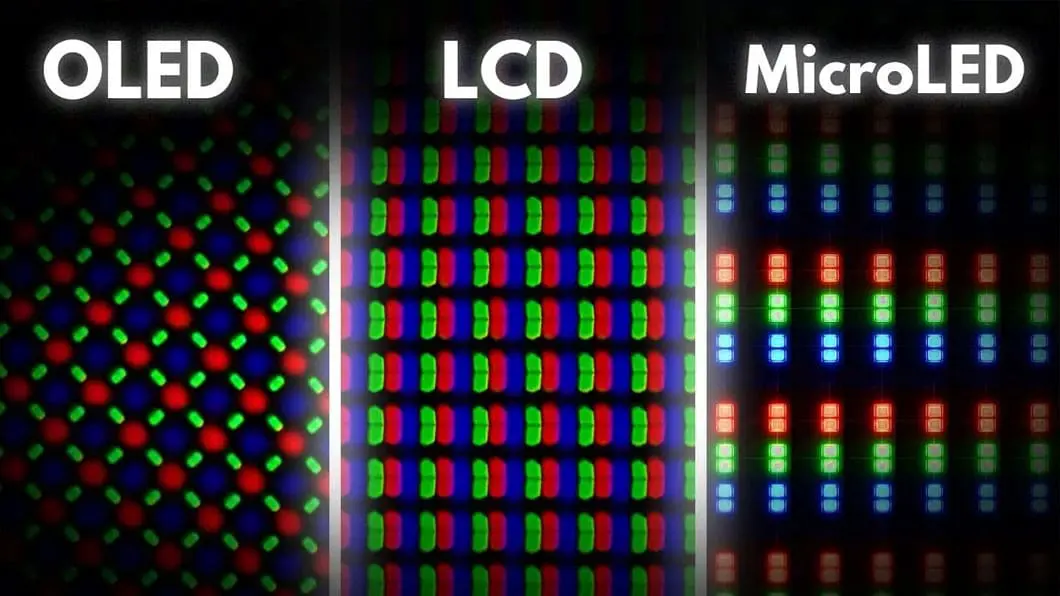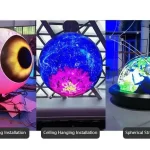In the ever-evolving world of display technology, MicroLED and OLED are two terms that frequently appear when discussing high-end television and screen technologies. Both have their unique advantages, but the question remains: Is MicroLED better than OLED? To answer that, we need to understand each technology, how they work, and how they differ in performance, durability, and cost-effectiveness. This article will provide a detailed comparison between MicroLED and OLED, helping you make an informed decision.

Understanding OLED Technology
OLED (Organic Light Emitting Diode) is a display technology where each pixel is made of organic compounds that emit light when an electric current passes through them. Unlike traditional LCD screens, which rely on backlighting, OLED panels are self-illuminating. This means that each pixel can turn on and off individually, offering true black levels, high contrast, and vivid colors.
Advantages of OLED:
- True Blacks: OLEDs can produce perfect blacks because individual pixels can be completely turned off.
- Superior Contrast Ratio: With true blacks, the contrast ratio is exceptionally high, which is perfect for watching movies or playing video games in dark environments.
- Thinner Design: OLED panels are extremely thin and flexible, making them ideal for sleek, modern television designs and curved screens.
- 넓은 시야각: OLED displays maintain color accuracy and brightness from nearly any viewing angle, unlike traditional LED displays, which can lose contrast when viewed from the side.
Disadvantages of OLED:
- Burn-In: One significant drawback of OLED technology is the risk of burn-in, where static images, like logos or interface elements, can permanently etch into the screen if displayed for too long.
- 수명: Although OLEDs are generally long-lasting, the organic materials degrade over time, which can affect color accuracy and brightness.
- Price: OLED screens are still expensive to produce, which makes them more costly compared to other display technologies, such as LED and LCD.
Understanding MicroLED Technology
마이크로LED is a newer display technology that utilizes microscopic LEDs to create each pixel. Unlike OLED, which relies on organic compounds, MicroLED uses inorganic LEDs to emit light. MicroLED displays are modular, meaning they can be created by assembling individual panels to form larger displays, making them highly customizable.
Advantages of MicroLED:
- Perfect Black Levels: Like OLED, MicroLED can achieve true blacks by turning off individual LEDs. Since each pixel is an independent light source, there’s no backlight bleed, resulting in perfect contrast.
- No Burn-In: One of the most significant advantages of MicroLED over OLED is that it’s immune to burn-in. Since MicroLED uses inorganic materials, the risk of image retention or permanent burn-in is eliminated.
- 더 긴 수명: MicroLED displays have a longer lifespan than OLEDs because the inorganic materials used are more durable and less prone to degradation over time.
- Brightness and Durability: MicroLED panels can achieve higher brightness levels compared to OLEDs, making them more suitable for bright environments. Additionally, they can maintain consistent brightness without the risk of burning out.
- 확장성: MicroLED displays are highly scalable. The modular nature of MicroLED allows manufacturers to build displays of any size and aspect ratio, from small screens to massive video walls.
Disadvantages of MicroLED:
- 비용: As of now, MicroLED technology is relatively expensive, mainly because of the complex manufacturing process. The cost of production is expected to decrease as the technology matures.
- 두께: While MicroLED displays can be relatively slim, they are not as thin as OLED displays. MicroLED panels require more space for the LED modules and may not be as sleek.
- Limited Availability: MicroLED technology is still in its early stages, with limited products available on the market compared to OLED, which has been around for longer.
Comparing MicroLED and OLED: Which is Better?
1. Image Quality: Both 마이크로LED 그리고 OLED excel in delivering superior picture quality. They both offer true blacks, high contrast ratios, and vibrant colors. However, 마이크로LED takes the edge when it comes to brightness. MicroLED displays can produce higher levels of brightness without compromising image quality, which makes them a better choice for bright rooms or outdoor displays. OLED, on the other hand, shines in dark environments, where its deep blacks and high contrast really stand out.
2. Durability and Lifespan: In terms of longevity, 마이크로LED has a clear advantage over OLED. OLED screens tend to degrade over time, especially in terms of color accuracy and brightness, as their organic materials wear out. MicroLED, with its inorganic LEDs, has a much longer lifespan and is resistant to burn-in, making it the better choice for long-term use.
3. Risk of Burn-In: Burn-in is one of the most significant drawbacks of OLED technology. If static images are displayed for too long, they can leave permanent marks on the screen. This is particularly problematic for users who plan on using their display for activities that involve static elements, like video games or news channels with fixed logos. 마이크로LED, however, is immune to burn-in, making it a safer choice for long-term use without worrying about image retention.
4. Cost: Currently, OLED displays are more affordable and accessible than 마이크로LED, which is still in its infancy. 마이크로LED technology is more expensive to produce due to the complexity of manufacturing individual micro-LEDs. However, as the technology becomes more widespread and production methods improve, the cost of 마이크로LED is expected to come down.
5. Flexibility and Design: OLED displays are ultra-thin and flexible, making them ideal for curved and flexible screen designs. The flexibility allows manufacturers to create unique, stylish designs, including foldable or rollable displays. 마이크로LED, while thinner than traditional LED displays, is not as flexible as OLED. However, MicroLED’s modular nature allows for scalable screens that can be customized to fit different sizes and aspect ratios, which makes it suitable for large-scale applications.
Which One is Right for You?
So, is 마이크로LED better than OLED? It depends on what you’re looking for in a display. If you prioritize image quality, 마이크로LED offers superior brightness and contrast, along with the durability of inorganic materials. If you’re looking for a 더 긴 수명 and want to avoid burn-in issues, 마이크로LED is the better option. However, OLED still shines in terms of affordability 그리고 유연성, and it remains the go-to choice for consumers looking for a high-quality, sleek, and affordable display.
For those looking for premium performance 그리고 최첨단 기술, 마이크로LED is undoubtedly the future of display tech, but for now, OLED remains the more accessible option with excellent performance at a lower price point. The ultimate choice comes down to your personal needs, budget, and preferences.
As display technologies continue to evolve, both 마이크로LED 그리고 OLED are likely to play pivotal roles in shaping the future of home entertainment, gaming, and professional display applications.













